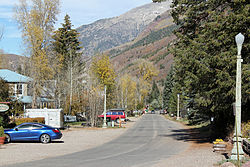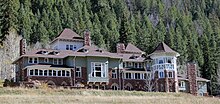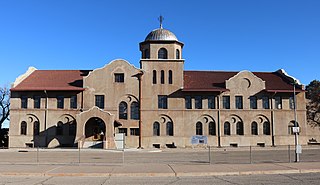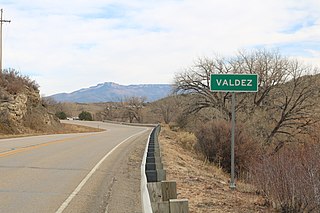Almost 250 ovens were built by workers from Denver to handle the Coalbasin coal, making it the largest such facility in the state. [5] The workers there, 10 percent of all the workers in the state at that time, were predominantly immigrants from Eastern Europe whom the company had recruited from the East. The miners, by contrast, were usually longtime Colorado residents who had worked in mines elsewhere. [3]
Mining towns in 19th-century Colorado had often been built by the miners themselves out of whatever material they could find and assemble in their spare time. Often these wound up being log cabins covered with rock and dirt. The companies had to provide other public services due to the remoteness of many camps, but did nothing to provide living quarters. In the labor unrest of the era, the shabby and unsafe housing, which miners often shared with their families, were a frequent source of complaint. [6]
Osgood, who had built his estate nearby, thought it was time to change that. The miners would be happier if they lived in decent accommodations, and happier miners would be more productive and less likely to strike. Inspired by the company towns built in New England, and more recently Pullman, Illinois, established by that company for its workers, he decided that Redstone would be a model for other CFI towns. [6] He had personally acquired much land in the valley, and spent nearly $5 million ($169 million in modern dollars [7] ) to build it. [8]
Plan
A planned townsite was laid out. There would be two streets, River Road (now Redstone Boulevard), the main street, and Hill Road, a side street slightly uphill from it to the east. In between there were occasional alleys and back streets with switchbacks. River Road ran all the way south to Osgood's estate. A railroad spur crossed the Crystal to run between River Road and the river, for passenger traffic and freight shipments to the town, allowing the main line to be used exclusively for coal and coke loading and unloading at the ovens. The commercial center of Redstone would be at the rail depot, just opposite the coke ovens; the rest of the town would be residential. [6]
Theodore Boal, who had designed Osgood Castle, was commissioned to supervise the design of Redstone's buildings. He adapted many popular Victorian styles to the mountain setting. In particular, he was enamored of the Swiss chalet style, popularized a half-century earlier by the influential Eastern architect and critic Andrew Jackson Downing in his pattern book The Architecture of Country Houses. On that basic form, he chose decorative elements from the Shingle, Dutch Colonial Revival and Tudorbethan styles. [6]
The first group of one-story frame cottages, meant for the coke oven workers, was finished in 1901. Structurally they were an improvement over the improvised shacks they were intended to replace. Instead of the board-and-batten siding common in other late 19th-century Colorado mining towns, they had clapboard or shiplap, painted in pleasant, "restful" pastel colors. Half-timber was a common decorative feature. Windows were generally two-over-two double-hung sash. At the rooflines were wide overhanging eaves meant to provide shelter from bad weather, decorated with wavy vergeboards and shaped wooden brackets. Their main blocks' hipped roofs, considered more picturesque by Downing, were pierced by gabled dormers and center chimneys. They were complemented by gabled or shed roofs on the porches. Many had outbuildings, some even themselves with decoration. Inside, the houses had three to five rooms. Amenities included electricity, provided at 35 cents ($10) a month in modern dollars [7] a month from a hydroelectric plant the company built on the Crystal, and running water, luxuries unknown to worker housing in previous mining towns. [6]
Larger buildings included the Tudor Revival Redstone Inn, originally a 40-room dormitory for the unmarried employees, at the south end of the center of town. In addition to electricity and running water, it had telephones, a barbershop, laundry and reading room. The company store at the north end was a timber-frame building closer in style to the cottages. Behind it were a fenced park and Lake Gibb, which froze over and allowed for ice skating in the winter. [6]
On Hill Road near the store were the Tudor Revival school, with a stone entrance tower. The company paid for the teachers and textbooks. The school had one of the earliest kindergartens in Colorado. In addition to educating the children of the miners, the school also did what is today called adult education. English classes were offered to students' parents, particularly those employed at the ovens, so they could work more efficiently. Workers' wives attended classes in "domestic science", what is known today as home economics. [6]
Nearby was the two-and-a-half-story wood-frame Redstone Club, recreational facilities for the workers. It included a billiard and pool room, reading room, and bar. At the latter facility, treating others to drinks was prohibited, a policy that CFI had implemented in Coalbasin and found effective in limiting the impact of alcohol consumption on the quality of life. Upstairs was a theater; the basement held showers, baths and dressing rooms. [6]
The club was complemented by the Big Horn Lodge across the river, meant for company meetings, banquets and entertaining guests from out of town. Its amenities included a bowling alley in the basement. It was less preferable for this purpose since the air around it was often polluted by smoke from the coke ovens. Nearby was the town cemetery and public gardens. Each family was offered a plot where, it was hoped, they could grow fresh vegetables, and perhaps raise a cow as well for milk. The company built a 195-foot (59 m) barn to house workers' livestock. [6]
Near the power plant was the firehouse. It was a two-story frame building with half-timbers, wood shingles and diamond-paned windows. Inside was one hand-drawn pumper. [6]
Construction continued throughout 1902, as the ovens went full blast. Redstone attracted national attention. At that year's St. Louis Exposition, it received an award. [6] The New York Times wrote about "The Ruby of the Rockies", as the community came to be nicknamed, calling it "a town to rave over ... the most beautiful town in Colorado." [9]
By 1903 83 cottages had been completed. South of the center of town a second group was started. These were intended for miners, middle managers and white-collar workers. They were located between two of the larger houses meant for senior managers. Architecturally they were similar to the workers' cottages in the center of town, but they were located on larger lots on the hillside with greater setbacks from the road, giving them a view over the valley. Mature trees were left standing, making the neighborhood seem carefully landscaped [6]
Just north of Osgood's estate, at the south end of River Road, were the houses of senior managers. They were the largest (save the castle), with more sweeping views and more elaborate ornamentation. A map from the time identifies one on the hillside above Hill Road as the superintendent's house. [6]
While they lived at the estate, Osgood and his wife, Alma, were a frequent presence among the workers. The two regularly attended public ceremonies and celebrations. Osgood personally checked on how miners were doing and donated supplies when needed. [6] Alma, known as Lady Bountiful by the workers, entertained visitors at the estate and made sure that all the latest fashions were available at the store. During construction, Boal was frequently about town reporting to Osgood. [10]






















